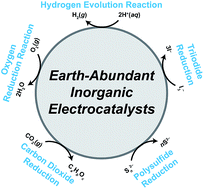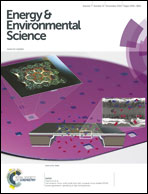Earth-abundant inorganic electrocatalysts and their nanostructures for energy conversion applications
Abstract
Electrocatalysis plays a key role in the energy conversion processes central to several renewable energy technologies that have been developed to lessen our reliance on fossil fuels. However, the best electrocatalysts for these processes—which include the hydrogen evolution reaction (HER), the oxygen reduction reaction (ORR), and the redox reactions that enable regenerative liquid-junction photoelectrochemical solar cells—often contain scarce and expensive noble metals, substantially limiting the potential for these technologies to compete with fossil fuels. The considerable challenge is to develop robust electrocatalysts composed exclusively of low-cost, earth-abundant elements that exhibit activity comparable to that of the noble metals. In this review, we summarize recent progress in the development of such high-performance earth-abundant inorganic electrocatalysts (and nanostructures thereof), classifying these materials based on their elemental constituents. We then detail the most critical obstacles facing earth-abundant inorganic electrocatalysts and discuss various strategies for further improving their performance. Lastly, we offer our perspectives on the current directions of earth-abundant inorganic electrocatalyst development and suggest pathways toward achieving performance competitive with their noble metal-containing counterparts.


 Please wait while we load your content...
Please wait while we load your content...